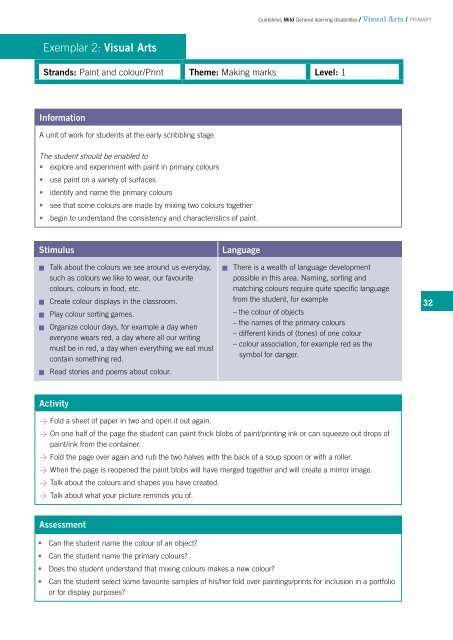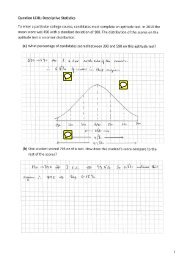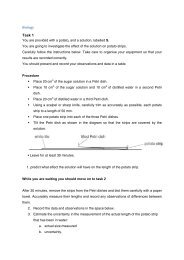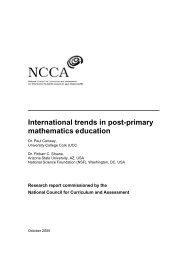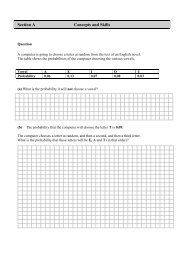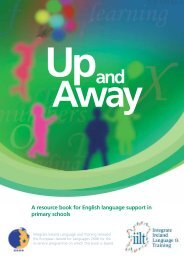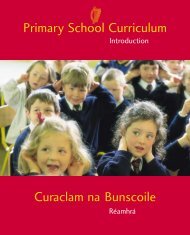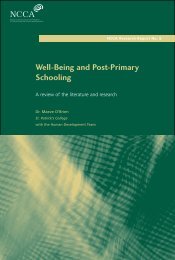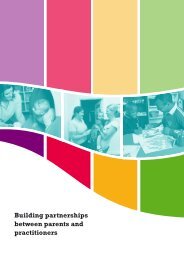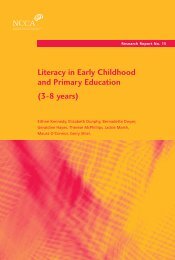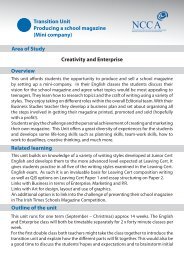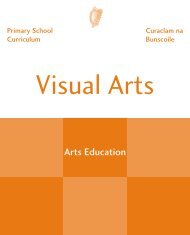Visual Arts - NCCA
Visual Arts - NCCA
Visual Arts - NCCA
You also want an ePaper? Increase the reach of your titles
YUMPU automatically turns print PDFs into web optimized ePapers that Google loves.
Exemplar 2: <strong>Visual</strong> <strong>Arts</strong><br />
Guidelines Mild General learning disabilities / <strong>Visual</strong> <strong>Arts</strong> / PRIMARY<br />
Strands: Paint and colour/Print Theme: Making marks Level: 1<br />
Information<br />
A unit of work for students at the early scribbling stage<br />
The student should be enabled to<br />
• explore and experiment with paint in primary colours<br />
•<br />
•<br />
•<br />
•<br />
use paint on a variety of surfaces<br />
identify and name the primary colours<br />
see that some colours are made by mixing two colours together<br />
begin to understand the consistency and characteristics of paint.<br />
Stimulus Language<br />
n<br />
n<br />
n<br />
n<br />
n<br />
Talk about the colours we see around us everyday,<br />
such as colours we like to wear, our favourite<br />
colours, colours in food, etc.<br />
Create colour displays in the classroom.<br />
Play colour sorting games.<br />
Organize colour days, for example a day when<br />
everyone wears red, a day where all our writing<br />
must be in red, a day when everything we eat must<br />
contain something red.<br />
Read stories and poems about colour.<br />
Activity<br />
n<br />
There is a wealth of language development<br />
possible in this area. Naming, sorting and<br />
matching colours require quite specific language<br />
from the student, for example<br />
– the colour of objects<br />
– the names of the primary colours<br />
– different kinds of (tones) of one colour<br />
– colour association, for example red as the<br />
symbol for danger.<br />
> Fold a sheet of paper in two and open it out again.<br />
> On one half of the page the student can paint thick blobs of paint/printing ink or can squeeze out drops of<br />
paint/ink from the container.<br />
> Fold the page over again and rub the two halves with the back of a soup spoon or with a roller.<br />
> When the page is reopened the paint blobs will have merged together and will create a mirror image.<br />
> Talk about the colours and shapes you have created.<br />
> Talk about what your picture reminds you of.<br />
Assessment<br />
• Can the student name the colour of an object?<br />
• Can the student name the primary colours?<br />
• Does the student understand that mixing colours makes a new colour?<br />
•<br />
Can the student select some favourite samples of his/her fold over paintings/prints for inclusion in a portfolio<br />
or for display purposes?<br />
2


